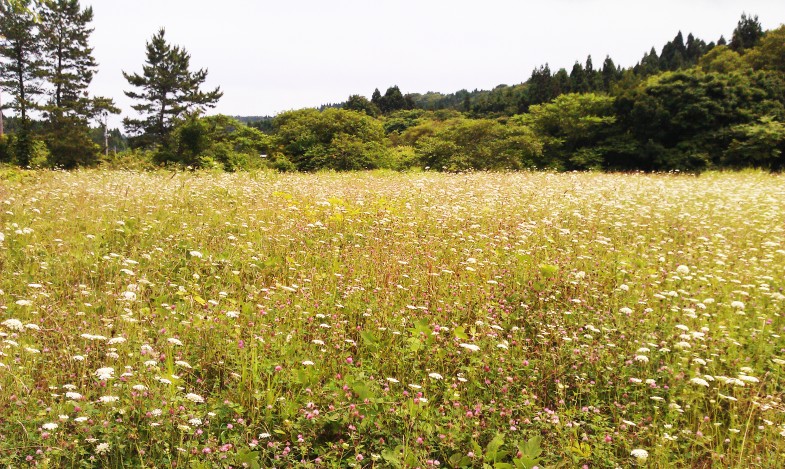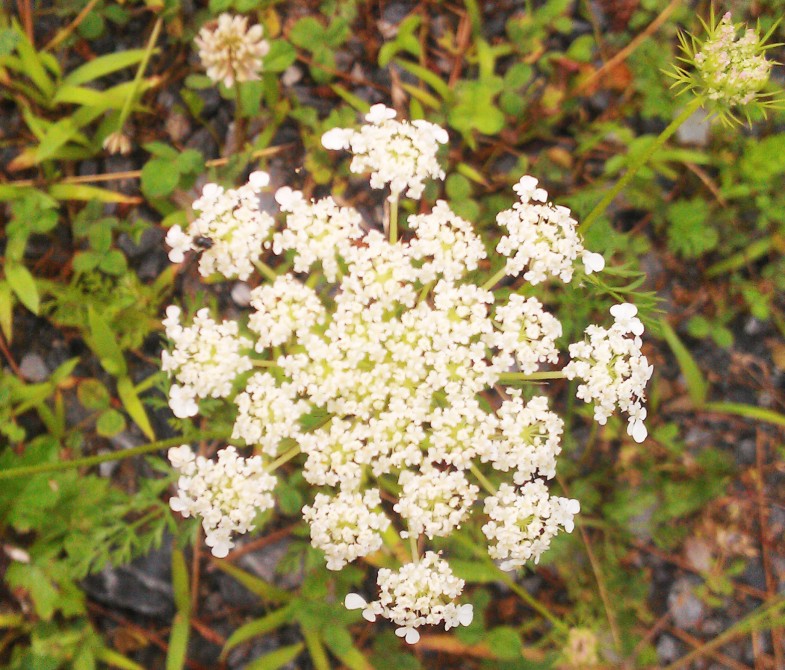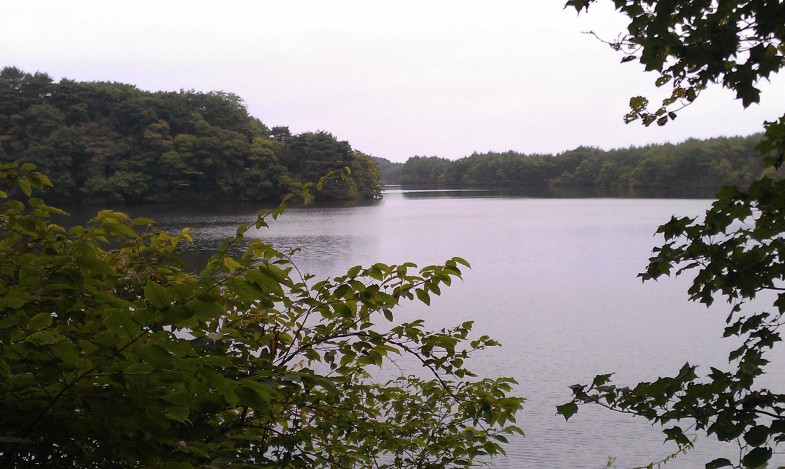
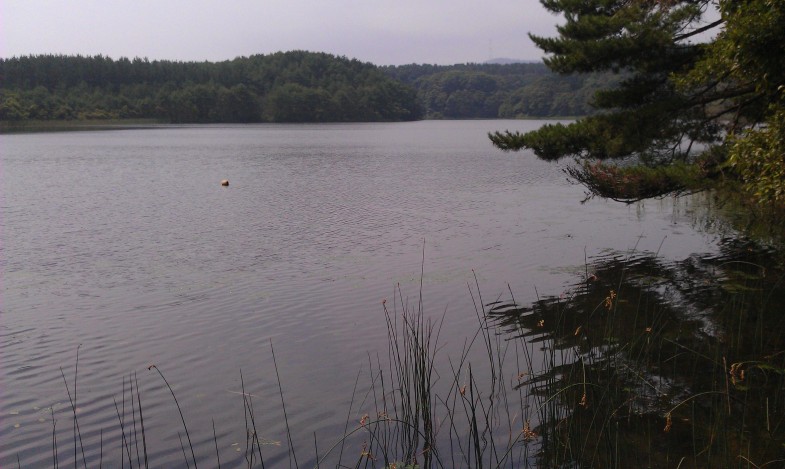
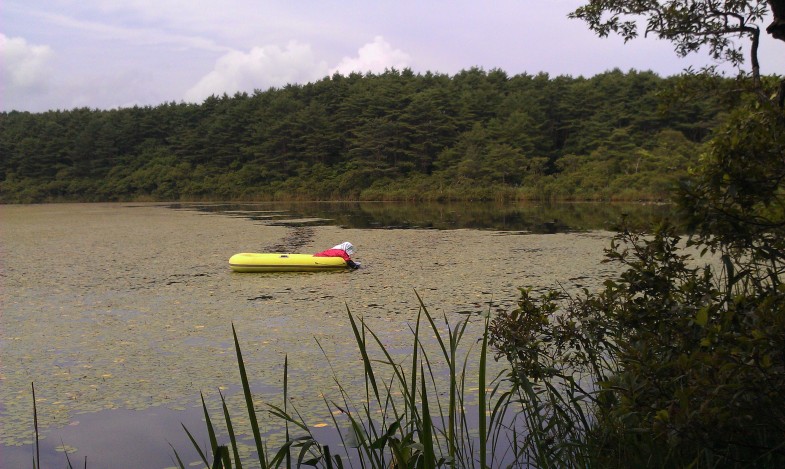
Liivajärv on liivarand, mis moodustab tuule mõjul lainelisi.、Need on mageveesood, mis tekivad looduslikult jõgede nõgudesse voolamisel (Sagata, Niigata prefektuur jne).。Veealune liiv paisub ookeanihoovuste ja lainete mõjul muldkehana üles, blokeerides väljapääsu.、(See moodustub erinevalt riimveejärvedest, nagu Saroma järv ja Hachirogata)。Luitejärv ise on väärtuslik üksus, mis on kogu maailmas kaduma läinud.、Bioloogiliselt väärtusliku keskkonna loomine。
Sand dune lake is a natural freshwater pond in a sandhill. It was shaped by wind. The wind had been carring sand and formed ups and downs, and then water stream into hollow places. It is not only very valuable existence itself in the world but also it gives important environment for biodeversity that’s being lost.
Higashidori külas、Seal on palju suuri ja väikeseid "liivatee järvi" (ainuüksi 13 nimelist sood)。Higashidori küla, Sarugamori liivaluited ja Back Wetlands on valitud Jaapani 500 olulise märgala hulka (tegelikult võib öelda, et suurem osa Shimokita poolsaarest on sel viisil valitud).。See ahv ga metsa liivadüün (laius 1-2 km)、"Shimokita liivaluited" on kombinatsioon liivaluidetest (kogupikkus 17 km) ja liivaluidetest, mis ulatuvad veidi sisemaale.、Kuigi see on vähe tuntud, on see tegelikult Jaapani suurim liivadüün.。Põhjus, miks see pole teada, on、Liivikuid ümbritsevad tuule- ja liivakaitsemetsad.、Asjad, mida inimestel on raske näha、Suuremat osa sellest kasutavad kaitseministeerium ja teised ballistiliste katsetusaladena.、Seda seetõttu, et sisenemine on keelatud.。
There are many dune lakes in Higashi-dori village. Named lakes are minimum 13s. Salugamori sandhill (1~2 km width, 17 km length) include the rear wetland in this village has selected one of 500 of the important wetland of Japan (Actually most of Shimokita peninsula is selected also). Additionaly, Shimokita sandhill (includ this Salugamori sandhill with the next ones) is really the biggest one in Japan. However almost all japanese don’t know of it. One of the reason is that this place is hidden from the roads by pine grove for protect the wind and the sand. The other one, here is off limited, because this ares has been useing for test site of trajectory of Ministry of Defence (MD).
Luitejärv ise asub väljaspool kaitseministeeriumi piirkonda.、Tundub, et osa sellest kasutatakse ka kalapüügiks.。Suuremaks on aga kasvanud ka tuule- ja liivakaitseks kasutatavad männimetsad.、Paljud rabasse viivad teed on kadumas.。Rahvastiku vähenemine ja vananemine jätkuvad ka siin.、Akadeemilisi uuringuid praegu ei tehta.。
These are out of the area of MD. A few lakes of it look as useing fishery sometimes but not often. Most of the roads to go there is being lost by growing thickly weeds and pine grove. Creasing depopulation and ageing there. Academic reserch stopped now.
Fotod on ülalt alla (asendatud põhjast lõunasse)、Onuma、Sakyo soo、Aranuma。Suurus ja sügavus varieeruvad veidi, kuid need on kõik oma loomulikus olekus.。Onuma on suur krevett、Sakyo-numa on kuulus Aegagropila Linnaei poolest.、Mis saab nüüd, kui uuringuid pole tehtud?。Aranuma sügavus on 1-2 m.、Brasenia schreberi koristatakse.。
Photo:(above) O-numa. Small river prawn lives in. (midlle) Sakyo-numa. Sakyo-numa is famous for “Hime-malimo” (small moss ball), but how is it now? (bottom) An old woman was picking “Jun-sai” (the water shield) from the water at lake Ala-numa. ※numa means lake or pond. All of dune lakes are Nature.
